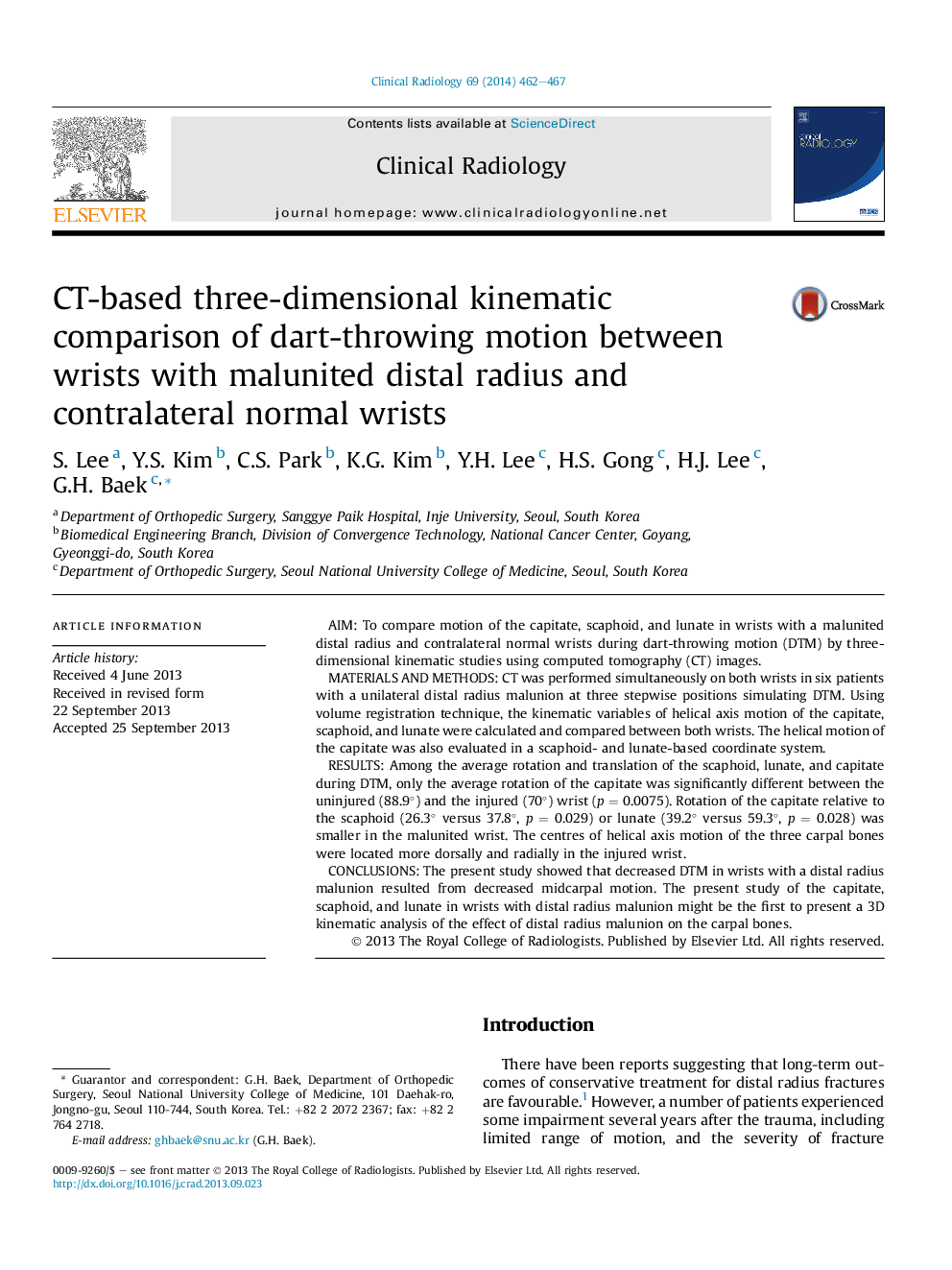| Article ID | Journal | Published Year | Pages | File Type |
|---|---|---|---|---|
| 3982337 | Clinical Radiology | 2014 | 6 Pages |
AimTo compare motion of the capitate, scaphoid, and lunate in wrists with a malunited distal radius and contralateral normal wrists during dart-throwing motion (DTM) by three-dimensional kinematic studies using computed tomography (CT) images.Materials and methodsCT was performed simultaneously on both wrists in six patients with a unilateral distal radius malunion at three stepwise positions simulating DTM. Using volume registration technique, the kinematic variables of helical axis motion of the capitate, scaphoid, and lunate were calculated and compared between both wrists. The helical motion of the capitate was also evaluated in a scaphoid- and lunate-based coordinate system.ResultsAmong the average rotation and translation of the scaphoid, lunate, and capitate during DTM, only the average rotation of the capitate was significantly different between the uninjured (88.9°) and the injured (70°) wrist (p = 0.0075). Rotation of the capitate relative to the scaphoid (26.3° versus 37.8°, p = 0.029) or lunate (39.2° versus 59.3°, p = 0.028) was smaller in the malunited wrist. The centres of helical axis motion of the three carpal bones were located more dorsally and radially in the injured wrist.ConclusionsThe present study showed that decreased DTM in wrists with a distal radius malunion resulted from decreased midcarpal motion. The present study of the capitate, scaphoid, and lunate in wrists with distal radius malunion might be the first to present a 3D kinematic analysis of the effect of distal radius malunion on the carpal bones.
